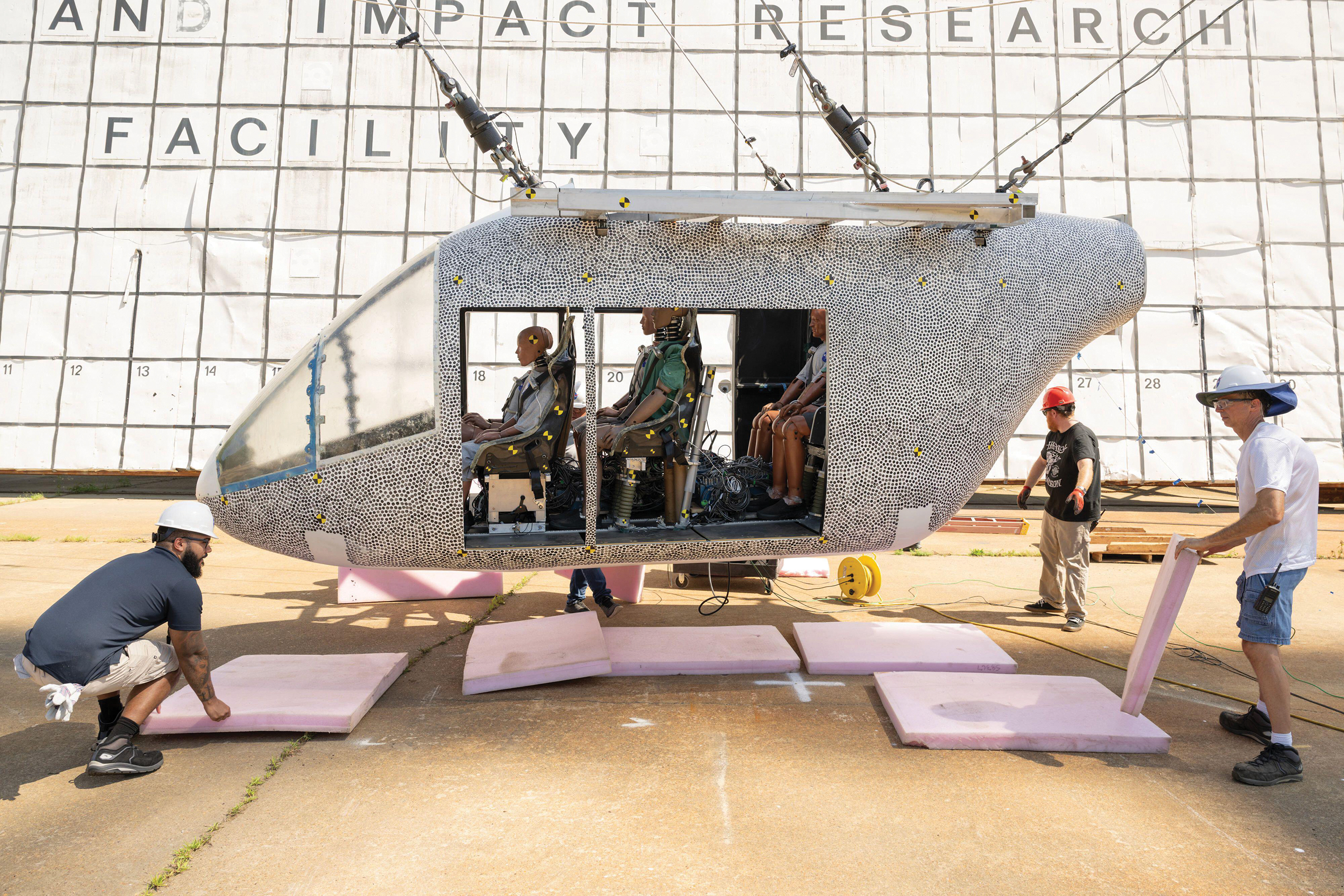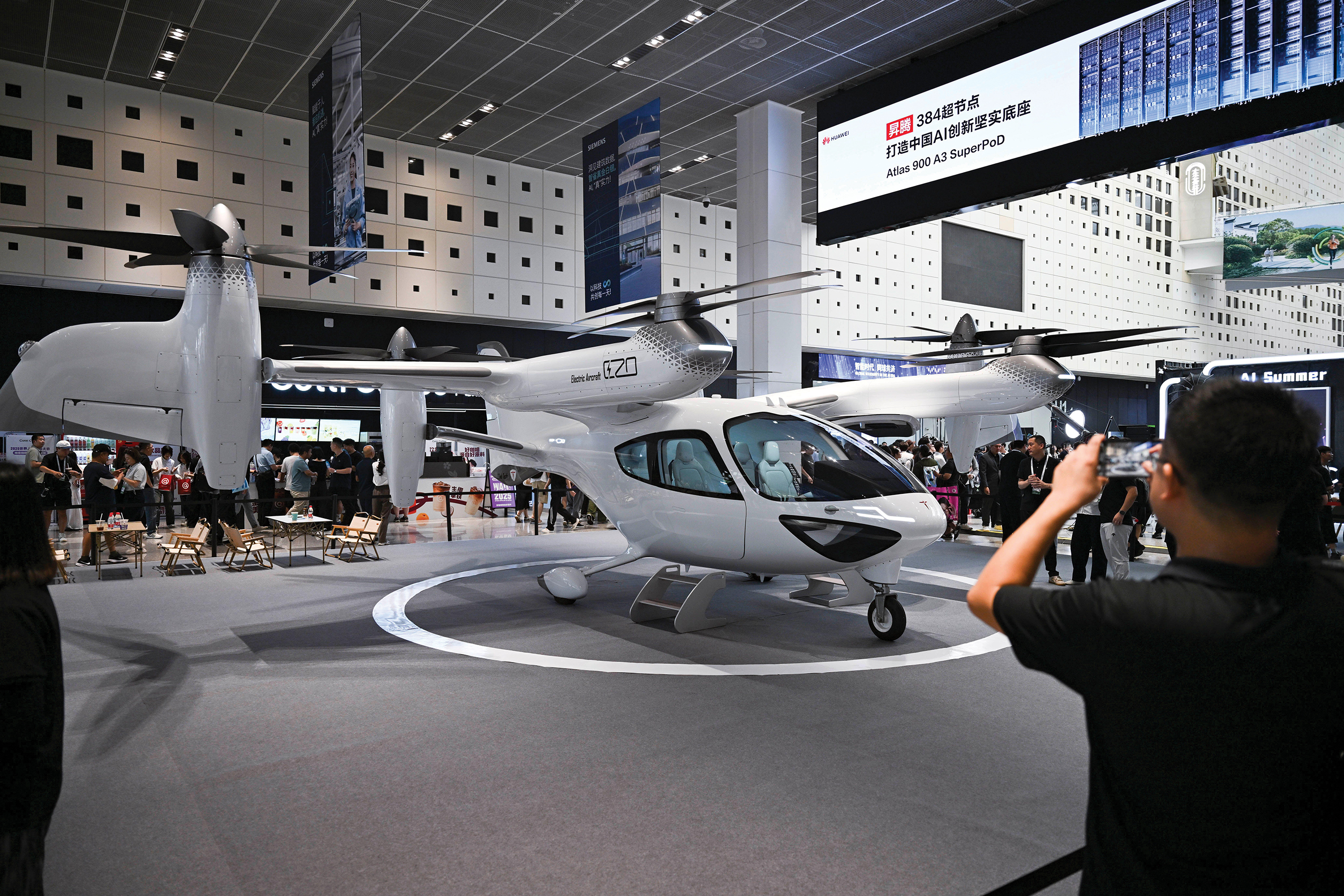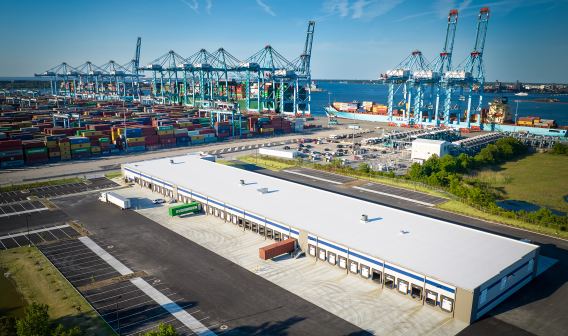The Future of Regional Air Travel in Virginia
Innovative flight technologies could connect major hubs with underserved areas

NASA is conducting research into Advanced Air Mobility to facilitate low-altitude passenger transport, cargo delivery, and public service capabilities, including this air taxi testing at Langley Research Center in Hampton.
Virginia’s transportation network faces congestion issues that come with population growth, and air travel is no exception. A report from the Virginia Innovation Partnership Corporation found that while the Commonwealth has 66 public-use airports, only nine serve commercial airlines, leaving many smaller communities disconnected from regular passenger flights. These constraints slow economic activity and restrict mobility.
Advanced Air Mobility (AAM) could help close the gap. This emerging sector includes electric and hybrid aircraft, drones, and other platforms designed for short trips, small landing areas, and flexible service. By connecting major hubs with underserved areas, AAM could ease traffic congestion, bypass flood-prone roads, increase access to remote areas, and more fully employ Virginia’s underused airports. The Commonwealth’s geographic diversity, infrastructure, and proximity to federal decision-makers put it in a strong position to lead in this next era of mobility.
Virginia’s Plan for the Skies
Scott Denny, Virginia’s Advanced Air Mobility manager at the Virginia Department of Aviation, said the state is moving quickly to address transportation challenges through innovation.
The Virginia AAM Strategic Plan outlines how to safely integrate new aviation technologies into the National Airspace System while driving economic growth. The plan is community-led, bringing together local governments, regional partnerships, and private businesses to identify infrastructure needs and test solutions, with the state providing funding, expertise, and coordination.
“It is our road map on how businesses looking to come in and operate in the Commonwealth can do so,” Denny said.
Two major pilot projects are now underway. The Stafford-Warrenton-Winchester Project uses small drones for package delivery and first responder support. These drones could deliver Narcan during an overdose or a defibrillator to a cardiac arrest victim, cutting response times. The project will collect operational data, test safety protocols, and build a cost-per-mile model for multiuser services.
“By the end of this project, we hope to demonstrate — first and foremost — that drones can operate safely, whether delivering packages or performing similar tasks, and that they can do so in and around existing airports,” Denny said.
The second project, a collaboration with Virginia Tech’s Mid-Atlantic Aviation Partnership, focuses on electric or hybrid “air taxis” like the Joby Aviation aircraft and the Electra EL-2 Goldfinch, which can carry four to five passengers. These aircraft could one day connect remote communities across congested corridors, offering a faster, cleaner alternative to driving.
Virginia has invested $1 million in these initiatives through a one-time allocation from the General Assembly. Both aim to deliver a minimum viable product within 18 months, creating proof-of-concept models to attract operators and investors. Denny noted that Virginia’s proximity to Washington, D.C., its strong defense and aerospace presence in Hampton Roads, and its mix of urban and rural environments provide ideal conditions for testing and scaling AAM technologies. These projects also support the Federal Aviation Administration’s (FAA) push to regulate “beyond visual line of sight” drone operations, a milestone that could unlock widespread commercial drone delivery.
By opening new travel markets through the Commonwealth’s airports, AAM could relieve pressure on clogged roadways, expand access for rural communities, and reduce last-mile shipping costs. “You’re opening up air travel to underserved communities,” Denny said.
You’re opening up air travel to underserved communities.
A Cautious Approach
While AAM promises solutions to many of Virginia’s transportation problems, not all stakeholders are ready to commit.
The Metropolitan Washington Airports Authority (MWAA), which operates Washington Dulles International Airport and Ronald Reagan Washington National Airport, is taking a measured approach. It is monitoring developments in three categories: small electric vertical takeoff and landing (eVTOL) aircraft with 100-mile ranges, larger electric or hybrid aircraft for up to 50 passengers, and next-generation supersonic planes for long-haul travel.
“We’re in the infant stages,” MWAA CEO Jack Potter said, adding that the technology is “something businesses, airports, and the state needs to be planning for.”
The hesitation stems from regulatory uncertainty and unclear demand. The FAA has yet to finalize operational and safety guidelines for AAM, and infrastructure needs remain undefined. Questions range from where to place vertiports in dense urban areas, to how to meet electrical demands for charging, to ensuring safe integration with existing air traffic. Space constraints are another factor. Dulles has room to expand, but Reagan’s tight footprint and restricted airspace present unique challenges. “Every airport would have to be looked at separately to know what flexibility exists,” Potter said.
Even so, Potter acknowledged that AAM could unlock “huge opportunities.” Linking smaller airports directly to Reagan, Dulles, Richmond International Airport, and Norfolk International Airport could bypass highway congestion and reduce travel times for business and leisure travelers. The authority is ensuring its long-term plans remain flexible, making room for future AAM infrastructure while learning from early adopters elsewhere.

Electric vertical takeoff and landing aircraft (eVTOL), like this craft shown at the 2025 World AI Conference in Shanghai, is a technology with potential to reduce travel times and connect remote communities with transit options.
Innovative Technologies
Some of Virginia’s most promising transportation solutions might come from just above the waterline.
That’s where REGENT Craft Inc. is betting big. The Rhode Island-based startup is developing all-electric Seagliders, technically known as wing-in-ground vessels. These “flying boats” are designed to connect coastal communities faster, cleaner, and cheaper than today’s options.
“We really do see this reduction in both travel time and ticket price, which are usually mutually exclusive,” said REGENT Vice President of Government Relations and Defense Tom Huntley.
Seagliders operate in three modes — float, foil, and fly — and spend most of their journey cruising about 30 feet above the water, using what’s known as ground effect. This aerodynamic zone reduces drag, allowing high-speed travel while avoiding gridlock and crowded flight paths. Ground-effect travel allows Seagliders to cover nearly 200 miles on a single charge with today’s battery technology.
Safety is reinforced with a triple-redundant control system, and operators can navigate using standard boat controls, easing the transition from traditional maritime operations. Because they operate over water, they are regulated as maritime vessels by the U.S. Coast Guard and the International Maritime Organization.
Huntley says REGENT is in the “very early stages” of deciding where to scale domestic manufacturing. While its first production facility is underway in Rhode Island, the company is exploring opportunities in Virginia — a move that would capitalize on the Commonwealth’s strengths in manufacturing and shipbuilding and could create jobs in maritime operations, maintenance, and repair.
On Virginia’s expansive coastline along the Atlantic Ocean and Chesapeake Bay, Seagliders could bypass traffic chokepoints, shorten commutes, and improve access to jobs and health care for communities often isolated by geography or flooding. The Commonwealth’s strong defense presence could also make it an early market for the technology. “It fills an unmet need in the transportation and defense markets,” Huntley said.
The Next Wave of Mobility
While Virginia’s public authorities navigate regulatory complexities, momentum is building. The Commonwealth’s pilot projects and partnerships are laying the groundwork for adoption when the regulatory environment matures.
In an era when transportation bottlenecks hinder economic growth, emergency response, and quality of life, AAM offers a compelling vision for Virginia’s future. Whether through drones delivering urgent medical supplies, air taxis bypassing traffic on Interstate 95, or Seagliders linking flood-prone coastal towns, the Commonwealth is preparing to adapt and help shape the next wave of mobility.




